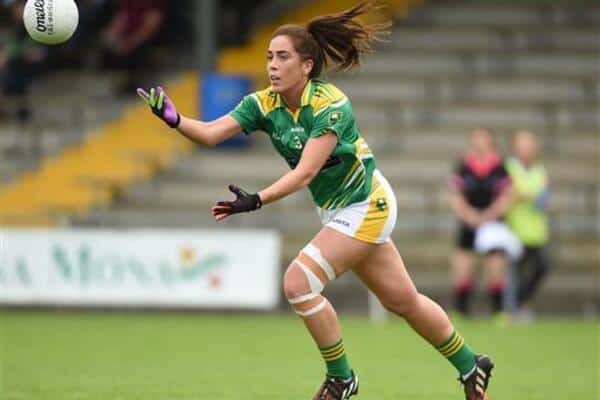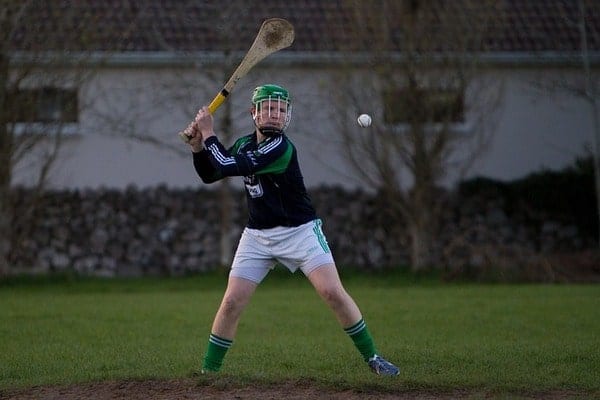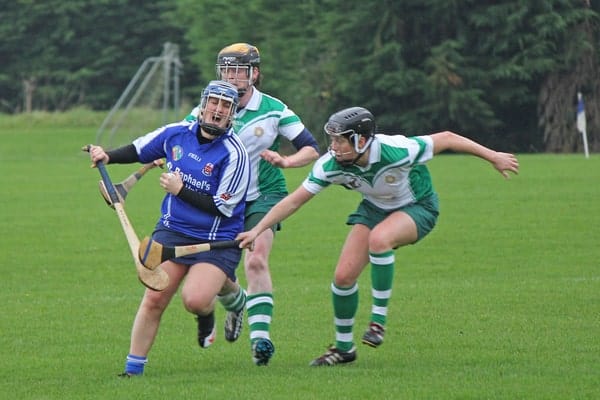City Tips
Book now

Irish Sports: a Guide to Gaelic Games and More
Irish sports are all about passion, tradition, and community. At the heart of it all is the Gaelic Athletic Association (GAA), founded in 1884 to celebrate and preserve Ireland’s unique sports. From the thunderous cheers of Gaelic football to the lightning-fast moves of hurling, these sports are more than games; they’re a way of life for many.
If you’re watching a match in a bustling stadium or a local club, the spirit and skill on display are truly captivating. Join us on a tour of Irish sports, where each game celebrates Ireland’s heritage and its people’s spirit.
What is the GAA?
The GAA (Gaelic Athletic Association) in Ireland is a major organisation that promotes and regulates traditional Irish sports, including Gaelic football, hurling, camogie (women’s hurling), and Gaelic handball. It was founded in 1884 with the aim of reviving and promoting these indigenous Irish sports, and has since become a central part of Irish culture and identity.
The GAA is responsible for organising competitions, developing the sports at all levels, and fostering a sense of community and national pride through sport. It is known for its grassroots focus, with clubs and teams representing local communities across Ireland and beyond.
Gaelic football and hurling are the most popular sports governed by the GAA. You might not be familiar with these. Let us explain. Gaelic football is similar to soccer and rugby, but with its own unique rules and style of play, while hurling is a fast-paced game played with a stick (hurley) and a small ball (sliotar). Both sports attract large crowds and passionate support, particularly during the annual All-Ireland Championships, which are the pinnacle of the GAA calendar. We’ll run you through the different Irish sports and sports events later in this guide. You’re welcome!
The GAA’s influence extends beyond sport, as it plays a role in promoting Irish language, culture, and community spirit. It is one of the most influential and successful amateur sporting organisations in the world, and its impact on Irish society is significant.
Now that you’re familiar with the GAA, let’s have a look at the 6 Gaelic Games!

What are the 6 Gaelic Games?
Step into the exciting world of Gaelic Games, where Irish culture comes alive through six traditional sports! Without further ado, here they are:
Gaelic Football
Definition: Gaelic football is a fast-paced field game played with a round ball and goals similar to those used in soccer. Players can carry, bounce, kick, and hand-pass the ball to move it up the field and score points by kicking it over the crossbar or into the goal.
Why it’s interesting to watch: Gaelic football is known for its high-intensity gameplay, combining the skills of soccer, rugby, and basketball. The speed, agility, and physicality of the players make for an exciting show.
What makes it unique: The Gaelic football field is larger than a soccer field but smaller than a rugby pitch, and there are 15 players on each team. Players can score either one point by kicking the ball over the crossbar or three points by scoring in the goal under the crossbar.
Interesting facts: The rules of Gaelic football were drawn up in 1884 by Maurice Davin. It is one of the few sports that originated in Ireland, and is the most popular sport in the country in terms of attendance at games.

Ladies’ Gaelic Football
Definition: Ladies’ Gaelic football is similar to Gaelic football but played by women. Overall, it follows the same rules and format as the men’s game.
Why it’s interesting to watch: Ladies’ Gaelic football showcases the skill, speed, and athleticism of female athletes. The level of competition, and the quality of play are captivating for fans of all ages.
What makes it unique: While the rules are the same as in men’s Gaelic football overall, there are some differences, like players having the freedom to lift the ball directly from the ground while standing.
Interesting facts: The Ladies’ Gaelic Football Association (LGFA) was founded in 1974 to promote and develop women’s Gaelic football. The sport has grown significantly in recent years, with over 150,000 registered players in Ireland alone.

Hurling
Definition: Hurling is an ancient Irish sport played with a curved wooden stick (hurley) and a small ball (sliotar). The objective is to score points by hitting the ball over the crossbar or into the goal.
Why it’s interesting to watch: Hurling is renowned for its speed, skill, and physicality. Players can hit the ball at incredible speeds and perform remarkable feats of athleticism.
What makes it unique: Hurling is one of the oldest field games in the world and is a key part of Irish culture. The skill required to control the ball, known as “the sliotar,” and the speed at which the game is played make it a thrilling spectacle.
Interesting facts: Hurling is one of the oldest field games in the world, with a history dating back over 3,000 years. It’s often referred to as the fastest game on grass due to the speed at which the ball travels and the pace of the game.

Camogie
Definition: Camogie is the female version of hurling, played with the same equipment and rules. It is a fast-paced and highly skilled sport.
Why it’s interesting to watch: Camogie showcases the agility, speed, and talent of female athletes. The level of skill and intensity of play make it a captivating sport to watch.
What makes it unique: Camogie is played with the same rules as hurling, but the women’s game has its own unique style and tactics, highlighting the abilities of female players.
Interesting facts: Camogie is played by over 100,000 women worldwide, making it one of the largest female team sports in the world. The first All-Ireland Camogie Championship took place in 1904, predating the men’s hurling championship.

Gaelic Handball
Definition: Gaelic handball is a traditional Irish sport played in a walled court with a small rubber ball. Players use their hands to hit the ball against the wall in such a way that their opponent cannot return it.
Why it’s interesting to watch: Gaelic handball requires incredible hand-eye coordination, speed, and agility. The fast-paced nature of the game and the skill of the players make it an exciting sport to watch.
What makes it unique: Gaelic handball is played in a walled court, which adds an extra dimension to the game. Players can use the walls to their advantage, adding spin and speed to the ball.
Interesting facts: The first time Gaelic handball was mentioned was in 1527 in Galway. The GAA organises national and international handball championships, including the All-Ireland Handball Championships, which have been held annually since 1925.

Rounders
Definition: Rounders is a bat-and-ball game similar to baseball, played with a ball and a bat. The objective is to score runs by hitting the ball and running around four bases.
Why it’s interesting to watch: Rounders is a fast-paced and strategic game that requires skill, speed, and teamwork. The excitement of the game and the competitive spirit of the players make it a thrilling sport to watch.
What makes it unique: Rounders is similar to baseball, but it has its own set of rules and tactics. The game is played on a smaller field, and there are fewer players on each team, which adds to the intensity and excitement of the game.
Interesting facts: Rounders has been played in Ireland and the UK for centuries, with the modern rules and organisation developed in the 19th century. While there are no official national or international championships for rounders, there are numerous regional and local tournaments held throughout the year.

If you’re interested in Irish culture, read our guide on Irish slang!
What other sports are popular in Ireland?
In addition to Gaelic Games, Ireland has a passion for a variety of sports! Football is hugely popular, with the Irish national team followed fervently by fans. Rugby is another big hit, with both the national team and provincial teams drawing large crowds and enthusiastic support.
Golf is a sport close to many Irish hearts, with Ireland boasting some of the world’s most beautiful courses. Tennis, swimming, and athletics are also enjoyed, with many Irish athletes excelling on the international stage.
Ireland’s love for horse racing is legendary, with events like the Galway Races and the Dublin Horse Show drawing spectators from far and wide.
Boxing has a strong tradition in Ireland, with numerous Olympic and world champions hailing from the country.
Ireland’s sporting enthusiasm isn’t just limited to traditional sports; emerging sports like surfing and mixed martial arts are also gaining popularity. Whatever the sport, the Irish are known for their passion, making Ireland a lively and exciting place for sports fans!

What are the biggest sports events in Ireland?
Ireland hosts some of the most exciting sports events, drawing crowds from near and far! The All-Ireland Finals for Gaelic football and hurling are massive, with fans packing into Croke Park to cheer on their county teams.
Rugby’s Six Nations Championship sees Ireland face off against other European giants like England and France, creating a buzz of excitement across the country.
The Dublin Horse Show is a prestigious equestrian event, featuring top-class show jumping and attracting competitors and spectators from around the globe.
The Irish Open, part of the European Tour, brings world-class golfers to Ireland’s stunning courses, showcasing the country’s love for golf.
Other notable events include the Galway Races, a week-long horse racing extravaganza, and the Women’s Mini Marathon, the largest all-female event of its kind in the world.
Ireland also hosts international events like the Red Bull Cliff Diving World Series, showcasing the country’s stunning coastal scenery.
These events are not just about sports; they’re a celebration of Irish culture, community, and the joy of competition!

What are the best sports venues in Ireland?
Ireland is home to some amazing sports venues, each with its own unique charm and atmosphere! Croke Park in Dublin is an iconic stadium, known for hosting Gaelic football and hurling matches, as well as concerts and events.
Aviva Stadium, also in Dublin, is the home of Irish rugby and soccer, with a vibrant atmosphere during matches.
Thomond Park in Limerick is renowned for its passionate rugby fans, creating an electric atmosphere for games.
The K Club in County Kildare is a world-class golf resort, hosting prestigious events like the Irish Open.
Punchestown Racecourse in County Kildare is a top destination for horse racing, particularly the Punchestown Festival, one of Ireland’s premier racing events.
Pairc Ui Chaoimh in Cork is a modern stadium that hosts Gaelic games, concerts, and other events, with stunning views of the River Lee.
These venues are not just places to watch sports, they’re part of Ireland’s sporting heritage, offering unforgettable experiences for fans and athletes alike!

The 5 best sports bar in Dublin
1. The Living Room
Location: Cathal Brugha St, Rotunda
Highlights: Cosy atmosphere, over 50 screens, huge beer garden, extensive beer and cocktail list, pizza and burgers menu.
2. The Wool Shed
Location: The Parnell Centre, 198-200 Parnell St
Highlights: Always happy atmosphere, large groups, fresh food, craft beers, cocktail menu.
3. Sinnotts Bar
Location: King St S
Highlights: Large screen and multiple TVs, special drinks offers, crowded during events, friendly staff.
4. The 51 Bar
Location: 51 Haddington Rd
Highlights: Wide selection of draft beers, excellent carvery, friendly and efficient staff, board games available.
5. Buskers on the Ball
Location: 13 – 17 Fleet St, Temple Bar
Highlights: Live street acts, relaxed atmosphere, variety of games (ping pong, pool, etc.), classic pub fare and fancy cocktails.

Read: The Cheapest Pubs in Dublin
FAQs on Irish sports
Q: What is the difference between Gaelic football and traditional football?
A: Gaelic football is played with a round ball, similar to a soccer ball, but slightly smaller, and allows players to carry the ball in their hands and kick it. It is played on a larger field with H-shaped goalposts at each end.
Q: What’s the difference between Gaelic football and ladies’ Gaelic football?
A: While the rules are largely the same, there are some differences in how the game is played, such as the ability for women’s players to lift the ball directly from the ground while standing.
Q: What’s the difference between hurling and camogie?
A: Hurling is played by men, while camogie is played by women. The rules and style of play are largely the same, but there are some differences to accommodate the different physical abilities of male and female players.
Q: What is the difference between Irish handball and traditional handball?
A: Irish handball is played with a hard ball against a wall in either a singles or doubles format. Players strike the ball with a hand or fist, aiming to hit the front wall without it touching the ground twice. The court has specific markings and rules for scoring.
Q: Where can I get tickets for sports events in Dublin?
A: Tickets for sports events in Dublin can be purchased from various sources, including online ticketing platforms, official team websites, and at the venue on the day of the event. It’s advisable to book tickets in advance for popular events to avoid disappointment.
To Sum Up
We hope you’ve enjoyed discovering these unique sports and that you feel inspired to explore the world of Irish sports further. If you’re cheering from the sidelines or taking to the field yourself, there’s a place for everyone in the world of Irish sports.
And if you’re planning a trip to Dublin to catch some live games, why not make your stay even more memorable by booking a room at I Lár? Our hostel is the perfect base for exploring the city and immersing yourself in the excitement of Irish sports. If you’re here for the Gaelic football finals or the hurling championships, our friendly staff will ensure you have a comfortable and enjoyable stay. Experience the thrill of Irish sports up close, and make the most of your time in Dublin with a stay at I Lár. We look forward to welcoming you!









